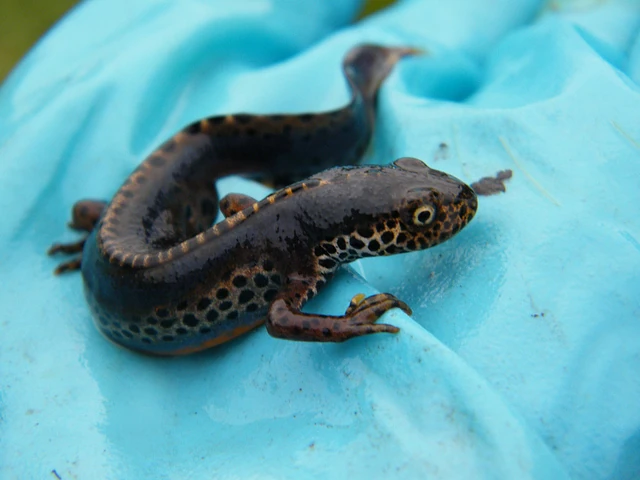Do you remember me telling you about Greece's "dragon houses"? Did you know Greece also boasts "dragon lakes"? They're known as a Drakolimni (Δρακολίμνη) and are most likely an Ice Age remnant, but of course the local lore is much more interesting.
The alpine or sub-alpine lakes are located in northwestern Greece, in the Epirus region. The ones in mountain Tymfi and Smolikas are the most widely known. Lake Drakolimni is located on Mt. Tymphi, under the peak Ploskos, at an altitude of 2,050 meters. It covers an area of about 5,000 square meters. Mt. Smolikas' dragon lake (Lygas) is located on a 2,200 meter elevation on Greece’s second highest mountain, Smolikas. It occupies an area of approx. 3,000-4,000 square meters.
Local legends claim that two large dragons living here. One lived on Mt. Tymphi and the other one on Mt. Smolikas. Every day they quarreled and threw massive rocks at each other, which fell into the lakes and were transformed into white rams and black sheep. The lake on Mt. Tymphi is inhabited by a species of alpine newt (Ichthyosaura alpestris) called drakakia by the locals (Δρακάκια) and resembles a small dragon, giving the lake its distinctive name.
I should mention that the dragons of ancient Hellas had very little--if anything--to do with the fantasy dragons we are so accustomed to now. The ancient Hellenes knew four types of dragon: the Drakones, the Ketea, the Khimaira and the Drakaenae. For more information and images of these lakes, go here.
The alpine or sub-alpine lakes are located in northwestern Greece, in the Epirus region. The ones in mountain Tymfi and Smolikas are the most widely known. Lake Drakolimni is located on Mt. Tymphi, under the peak Ploskos, at an altitude of 2,050 meters. It covers an area of about 5,000 square meters. Mt. Smolikas' dragon lake (Lygas) is located on a 2,200 meter elevation on Greece’s second highest mountain, Smolikas. It occupies an area of approx. 3,000-4,000 square meters.
Local legends claim that two large dragons living here. One lived on Mt. Tymphi and the other one on Mt. Smolikas. Every day they quarreled and threw massive rocks at each other, which fell into the lakes and were transformed into white rams and black sheep. The lake on Mt. Tymphi is inhabited by a species of alpine newt (Ichthyosaura alpestris) called drakakia by the locals (Δρακάκια) and resembles a small dragon, giving the lake its distinctive name.
I should mention that the dragons of ancient Hellas had very little--if anything--to do with the fantasy dragons we are so accustomed to now. The ancient Hellenes knew four types of dragon: the Drakones, the Ketea, the Khimaira and the Drakaenae. For more information and images of these lakes, go here.

 Khaire! Would you buy me a coffee?
Khaire! Would you buy me a coffee?
No comments:
Post a Comment